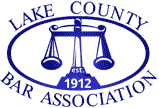Personalized Legal Services in Barrington & Schaumburg, IL
We speak English, Ukrainian and Russian languages
| Personal Injury |
Business Law |
Real Estate Law |
Wills, Trusts & Probate |
General Civil Litigation |
Elder Law |
Two Deaths Are Two Occurrences
In a case clarifying an important insurance issue, the Illinois Supreme Court addressed what constitutes an "occurrence" for purposes of an insurance policy.
Many insurance policies contain two separate coverage limits: a "per occurrence" limit, setting a coverage limit for any single occurrence, and an "aggregate" limit, fixing an upper limit the policy will pay, regardless of the number of occurrences. Therefore, more than one occurrence increases the amount of coverage available, up to the aggregate limit.
The case involved two boys who fell into a pit and died of hypothermia when they became trapped and could not get out. The investigation showed that one fell in and got stuck, and the other got caught trying to help his friend. The question was whether this was one occurrence (for which a $1 million per occurrence limit applied) or two occurrences (in which case the $2 million aggregate limit applied).
The supreme court ruled that the two deaths were two separate occurrences. An "occurrence" in Illinois is determined by the "cause theory," which focuses on what caused the damages. Using this standard, the court rejected the insurer's argument that the "cause" of the deaths was a single failure by the property owner to secure his property.
The court did recognize that when events are close together in time and space, they should be treated as if they are a single event and, therefore, a single occurrence. However, the court found that this did not happen, because the evidence did not show that the boys had become trapped at the same time, nor did it show how close together in time the two boys died. Because the evidence did not show that the boys' injuries were so close in time and space that they should be treated as a single event, their injuries were treated as two separate events and, therefore, two separate occurrences.
By clearly defining both what constitutes an occurrence and what evidence would be required to show that a series of events is a single occurrence because of a close temporal and spatial relationship, the court has hopefully made what can be a complex issue of insurance coverage easier to analyze and apply.
This website is not intended to constitute legal advice or the provision of legal services. By posting and/or maintaining the website and its contents, Lucas Law does not intend to solicit business from clients located in states or jurisdictions outside of Illinois wherein Lucas Law or its individual attorney(s) are not licensed or authorized to practice law.














